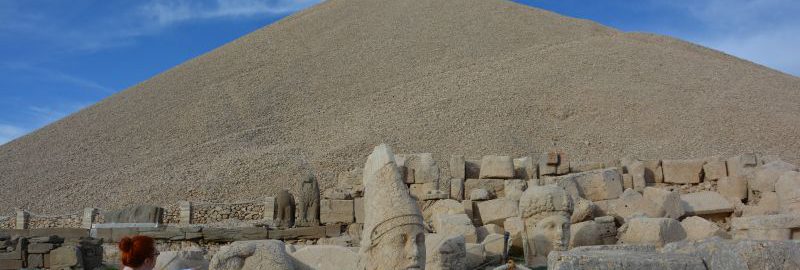When gradually in the east of the Hellenistic world, after the fall of the Pergamon Kingdom and the defeat of Mithridates VI Eupator due to Rome, the established order collapsed, on the outskirts of the Roman Empire, the few countries that were boldly navigating between Rome and the Parthian Empire began to function boldly. One of them was the Kingdom of Comagene, which had been developing since the fall of the Seleucids.
The rulers of this country derived their pedigree rightly or wrongly from Darius the Great, the famous Persian king. However, the Hellenic culture was pouring more and more into the state of the rulers of Commagene and they decided not to resist its charm. The best known of these kings, Antiochus I Theos Dikaios Epiphanes Philorhomaios Philhellen, clearly defined his preferences and the direction his country would look at. It is no accident that his titles mean “Antiochos, the just, eminent god, friend of Romans and friend of Greeks”.
At the beginning everything was going well Antiochus aptly took the side of the Romans in the war with the king of Armenia Tigres II, he was not mistaken in betting on Pompey in his war with the remnants of the Seleucid state in Syria. He even received in the Senate an ivory scepter, an embroidered triumphal robe and the title of king, ally and friend of Rome. It was a traditional formula that recognizes and rewards Rome’s allies.
However, from that moment on, Antiochus I was getting worse. We all know what ended up putting on Pompey in those times. For the second time, Antiochus I was mistaken in making peace with Antony and becoming his ally. Such insults Octavian did not forgive and Commagene became a Roman protectorate. Antiochus I died in 36 BCE.
Over time, the rulers of Rome removed the Orondite dynasty from power, and Commagene became part of the Roman province of Cappadocia. Antiochus I of Commagene, however, left behind a permanent monument – rediscovered in the nineteenth century – his magnificent tomb in the form of a tumulus called Nemrut Dagi, hidden among the hills of East Taurus near today’s Adiyman in Turkey. Antiochus himself suggested that his tomb be “in a high and sacred place, distant from people and close to the gods with whom he is in line.” He wanted his body to be preserved for eternity. The tomb is really impressive; from a distance it looks like an ordinary mountain, but when coming closer we notice that it is the work of people.
The mound of stones probably turned out to be an effective way to prevent it being plundered, and if it could get inside it could be a Tutankhamun-like discovery. Well, it could… if the tumulus were not made of sliding stones. The inept works of American archaeologists from the 1920s and an attempt to dig it out caused its significant reduction. Today, the Turkish government has banned such “experiments”. Antiochus I considered himself equal to the gods; however, he could not decide to form his cult, so he decided to mix Iranian Zoroastrianism with Roman-Hellenistic gods. Ultimately, he bet on Hercules, Zeus-Ormuzd, Tycha and Apollo-Mitra.
Personally, I am very happy to visit this place because it is the farthest point east of the Roman Empire that I have reached so far. The view of the Euphrates plains and the river itself, which extends from Nemrut Dagi, gives a wonderful reference where our European civilization once reached. What exactly was a Roman citizen doing in these distant and culturally foreign areas – not a buyer? Why and how far did Rome want to reach?


